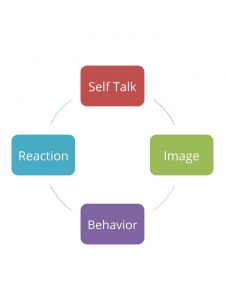THE TOOLKIT
Self Talk

A popular perspective on communication coaching contends that the source of our actions lies in the content of our thoughts. Thought, by its nature, is communication with one’s self. We believe that one can increase his/her perceived effectiveness by honing the behaviors of “constructive interpersonal communication.” Referred by some as “self-talk” or “internal dialogue,” it is valuable to trace the effect that such language has upon our external behaviors.
There is an important distinction between “constructive” and the more popular “positive.” Let’s face it, sometimes things are enormously stressful to think and communicate about. Simple positive language such as “everything is just fine” is neither realistic nor helpful. Constructive language is what people employ to do the best they can under the situation. The primary characteristic of constructive self-language is that it is action/future oriented.
Example: When faced with a presentation, what do you say to yourself?
“I hate speaking in front of people. It always makes me nervous. This is not going to go well.”
Research and our experience with clients shows that this mindset destines one into inaction. After all, human beings hate being wrong about themselves, so one ends up doing little or nothing, reinforcing the correctness of the original belief. Insured then is a mediocre effort of preparation and the resulting ineffectiveness.
If one makes the choice to constructively approach the presentation, different self-statements emerge:
What do I need to do to be effective? What is the audience going to respond to best? What do I need to do to get to that point?
The critical difference is in the net effect of the questions. The first set (typically more popularly employed) freezes the user and sets him/her on a destructive self-reinforcing cycle. The second provides actionable options for engaging in credible external behaviors that the audience can respond well to. The reinforcing cycle can lead to not only success in the moment, but for future communication events as well.
Changing the way one thinks may indeed be the hardest of all habits to break. Ironically, the main obstacle to this change is the habit itself. With the clear link between thought and behavior, whatever you say to yourself about this perspective will go a long way to determine how much success or failure you find.




